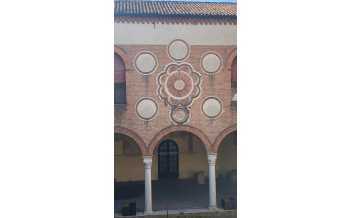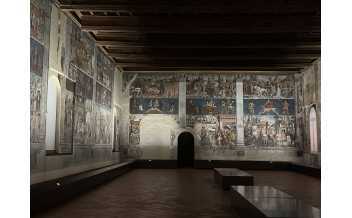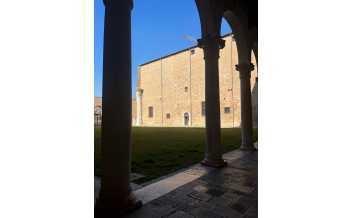Ferrara is in the Po Valley in the northern part of Italy, in the Emilia-Romagna region. It is crossed by the Po River and is known for its network of canals, which give it a unique atmosphere.
Ferrara has ancient roots dating back to the Roman era but its period of greatest splendour is associated with the rule of the Este family, a powerful noble dynasty. The city reached the height of its greatness during the Renaissance under their rule, becoming an important cultural and artistic centre.
When the city became the center of the Duchy of Este in the 16th century imposing defensive walls were built, which still surround the historic center today and are considered to be one of the best-preserved fortification systems in Europe.
In the centuries that followed, Ferrara managed to preserve its historical charm, so that in 1995 the historic centre, along with its walls, was recognized as a UNESCO World Heritage Site. Today the city has lots of monuments to explore such as the Estense Castle, the Cathedral of Saint George and Trento and Trieste Square.
Activities
-
-
Il Teatro Comunale di Ferrara
Transformed in recent years into a modern theatre, this 15th-century opera...
-
Museum of Casa Romei, Ferrara
Commissioned by the wealthy merchant Giovanni Romei in the 15th century, this...
-
Palazzo Schifanoia, Museum of Ancient Art,...
Built in the 15th century, the Palazzo Schifanoia, (translated as "Palace of...
-
-
Piazza Trento Trieste, Ferrara
This central square, surrounded by The Cathedral of San Giorgio, the Ducal...
-
The Diamond Palace, National Gallery of...
Built in the 16th century, The Diamond Palace is an outstanding example of...
-
The Monastery of Sant'Antonio in Polesine,...
This ancient monastery, a few kilometers from Ferrara is dedicated to Saint...
-
The Monumental Cemetery of Certosa in Ferrara
This cemetery, founded in 1452, originally served as a Carthusian monastery
-
The National Archaeological Museum of Ferrara
The National Archaeological Museum of Ferrara is a fascinating journey into...
-
















